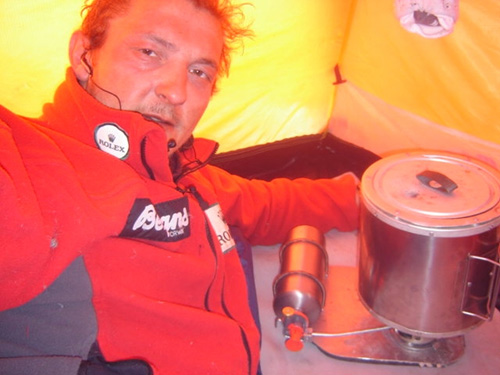Great polar travellers of the modern era - RUNE GJELDNES
Much is often, quite rightly, made of the pioneering polar explorers who made the first forays into the Arctic and Antarctic from the 19th Century until the 1920s. The tales of Mawson, Scott, Amundsen, Nansen and Peary grip the imagination with their bravery and negligible chances of rescue.
Although the North and South Poles have been reached overland all those decades ago, there is still a significant but small group of polar travellers who continue to push back boundaries in the polar regions. They are in most cases totally unknown outside of their own countries and are often forgotten in deference to those with powerful publicity teams.
Every week, I hope to publish a new blog article to illustrate the remarkable expeditions of another modern polar great.
----------
Rune Gjeldnes - Norway

Rune began his polar career in the mid-1990s having completed his military service in a specialist unit of the Norwegian Navy. His military training and upbringing in a nation completely immersed in cross-country skiing has allowed him to become a genuine pioneer and innovator of polar systems and equipment. His influence on sledge(pulka)-design has been instrumental.
His first major expedition was a mammoth 2900km length-wise crossing of Greenland in 1996 using para-sail support after he and Torry Larsen had been parachuted onto the ice. The use of modern-style wind support to improve daily progress was still in its infancy in the mid-1990s.
Gjeldnes' most significant polar expedition to date, one that ranks amongst the most difficult of all time, was the fully unsupported crossing of the Arctic Ocean in 2000 he undertook with long-term colleague Torry Larsen. This 2100km traverse from Russia to Canada via the North Pole was staggering in its sheer distance and technical demands. The pair were, despite their slick and well-practiced polar routine, in a degraded condition by the time they reached land after 109 days.
In a first expedition to the Antarctic, Rune completed the 'Longest March', a 2005/6 4800km wind-supported solo crossing. This smashed the previous distance record without resupply and took only 90 days despite periods of low-winds. He was delivered to his start point at Novo Base, run by the Russian ALCI organisation, by aircraft. On the opposite coast at McMurdo, Rune was picked up by zodiac boat and made his way back to civilisation on a cruise ship.